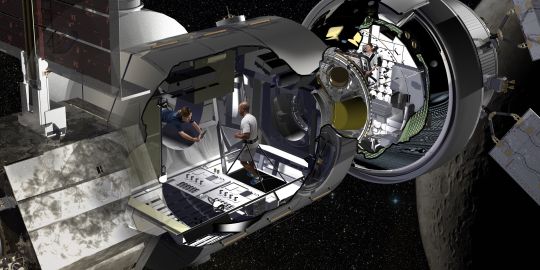
Going to space is cool, but it’s not known for being the most comfortable of experiences. Aerospace company Lockheed Martin is one of six companies tasked by Nasa with creating possible space habitats for astronauts travelling through deep space. The company adapted a 22-foot long leftover cargo module from the space shuttle era into a living area for four astronauts that’s about the size of a bus. ‘You think of it as an RV in deep space,’ said Bill Pratt, the program’s manager, when discussing the prototype.
‘When you’re in an RV, your table becomes your bed and things are always moving around, so you have to be really efficient with the space. That’s a lot of what we are testing here.’ Lockheed was given $65 million by Nasa to help develop the prototype and to work efficiently the team used augmented reality headsets to map out how the module would be organised. Eventually, the module would be attached to the Deep Space Gateway – an orbiting space port that would be a jumping-off point for missions to Mars and beyond.
There are rigorous tests that any space habitat or spacecraft has to undergo, especially if it plans to support humans on the 1,000 day journey to Mars. Lisa Callahan, vice president and general manager of Lockheed’s commercial civil space division, said: ‘This is the infrastructure for sustained human space exploration and so you have to account for every scenario that could come up, that’s why the requirements are so stringent.’

